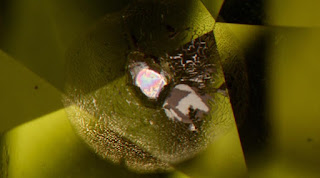Discovering Peridot: The Gem of the Sun
A Brief History
Peridot has been mined for over 3,500 years, with origins tracing back to ancient Egypt, where it was known as "the emerald of the evening." Ancient Egyptians believed that peridot possessed protective qualities and often adorned their artifacts with this gemstone. Today, the island of Zabargad, located in the Red Sea, remains one of the most significant historical sources of peridot.
Characteristics of Peridot
Peridot’s most distinctive feature is its vibrant green color, which can range from yellow-green to olive green, depending on the iron content in the stone. The most sought-after peridot exhibits a deep, rich green hue. Unlike many other gemstones, peridot is typically found in its natural state, meaning it requires minimal treatment or enhancement.
Peridot has a Mohs hardness rating of 6.5 to 7, making it a durable option for jewelry. Its unique crystal structure results in a vitreous luster and remarkable clarity, often showcasing beautiful inclusions that tell the stone’s geological story.
Metaphysical Properties
Beyond its aesthetic appeal, peridot is associated with various metaphysical properties. It is believed to bring prosperity, abundance, and positive energy to its wearer. Many people use peridot to enhance their emotional well-being, promoting a sense of peace and reducing stress.
Additionally, peridot is linked to the heart chakra, making it a powerful stone for fostering love and compassion. It’s often used in meditation and healing practices to facilitate emotional healing and personal growth.
Types of inclusion found
In mineralogy, inclusion refers to any material that is trapped inside a mineral during its formation. In the case of peridot, inclusions can provide important information about its origin, formation process, and authenticity.
some common types of inclusions found in peridot:
1. Lily Pad Inclusions: These are characteristic inclusions that look like greenish, disk-shaped cracks with a dark center. They're caused by crystals of chromite or spinel inside the peridot. These inclusions are common and are often used as identifying features in natural peridot.
2. Crystal Inclusions: Peridot may contain small crystals of other minerals, like pyroxene or olivine. These inclusions can sometimes be seen with magnification.
3. Liquid or Gas Inclusions: Some peridot gems may have tiny bubbles of liquid or gas trapped inside, which were present during the gem’s formation.
4. Needle-Like Inclusions: Fine, elongated needle-like inclusions are sometimes found in peridot and can indicate the natural origin of the gemstone.
While inclusions are often viewed as imperfections, they can actually enhance the uniqueness and value of a gemstone by offering proof of its natural origin.
Care and Maintenance
Conclusion
Peridot is more than just a beautiful gemstone; it carries a rich history and a plethora of meanings. Whether worn as jewelry or kept as a collector’s piece, this gem continues to inspire and enchant. With its sunny disposition and vibrant color, peridot truly embodies the warmth and energy of the sun. If you’re looking to add a touch of nature’s brilliance to your collection, consider the stunning peridot—an ancient treasure that remains timeless.








